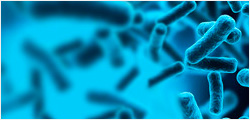
Figure 1: Neurokinin B-induced concentration-dependent stimulation of intracellular calcium mobilization in CHO-K1/NK3 cells. The cells were loaded with Calcium-4 prior to stimulation with an NK3 receptor agonist, Neurokinin B. The intracellular calcium change was measured by FLIPRTETRA. The relative fluorescent units (RFU) were normalized and plotted against the log of the cumulative doses (5-fold dilution) of Neurokinin B (Mean ± SEM, n = 2). The EC50 of Neurokinin B on NK3 in CHO-K1 cells was 12.0 nM.
Notes:
EC50 value is calculated with four parameter logistic equation:
Y=Bottom + (Top-Bottom) / (1+10^((LogEC50-X)*Hill Slope))
X is the logarithm of concentration. Y is the response
Y is % stimulation of RFU and starts at Bottom and goes to Top with a sigmoid shape.

Figure 1: Neurokinin B-induced concentration-dependent stimulation of intracellular calcium mobilization in CHO-K1/NK3 cells. The cells were loaded with Calcium-4 prior to stimulation with an NK3 receptor agonist, Neurokinin B. The intracellular calcium change was measured by FLIPRTETRA. The relative fluorescent units (RFU) were normalized and plotted against the log of the cumulative doses (5-fold dilution) of Neurokinin B (Mean ± SEM, n = 2). The EC50 of Neurokinin B on NK3 in CHO-K1 cells was 12.0 nM.
Notes:
EC50 value is calculated with four parameter logistic equation:
Y=Bottom + (Top-Bottom) / (1+10^((LogEC50-X)*Hill Slope))
X is the logarithm of concentration. Y is the response
Y is % stimulation of RFU and starts at Bottom and goes to Top with a sigmoid shape.
CHO-K1/NK3 Stable Cell Line
| M00201 | |
|
|
|
| ¥1,661,121.00 | |
|
|
|
|
|
|
| Ask us a question | |








































